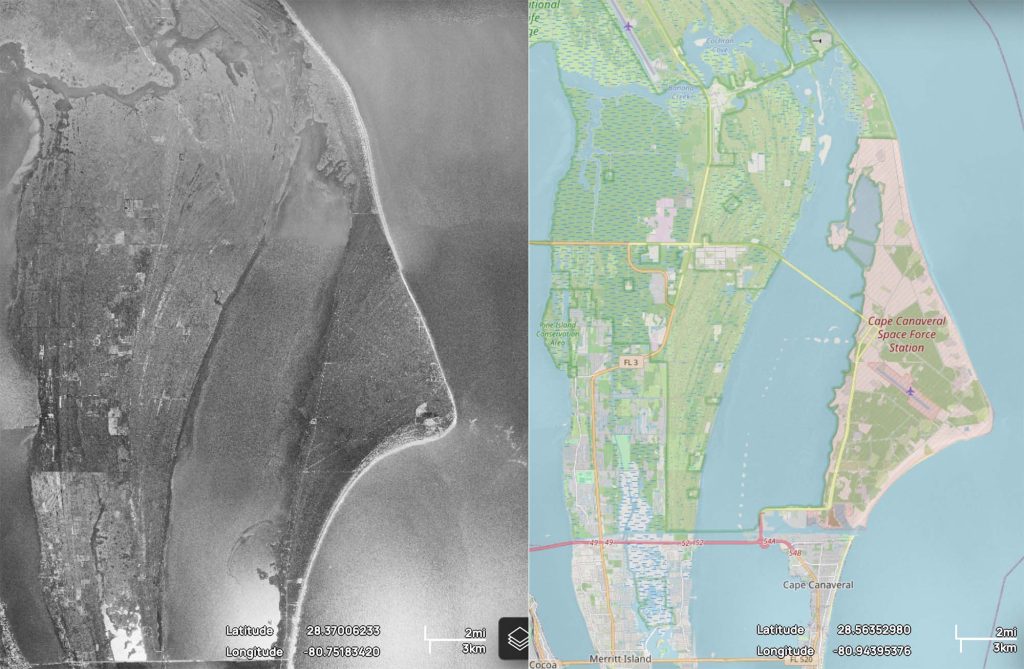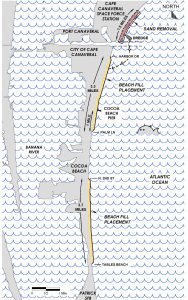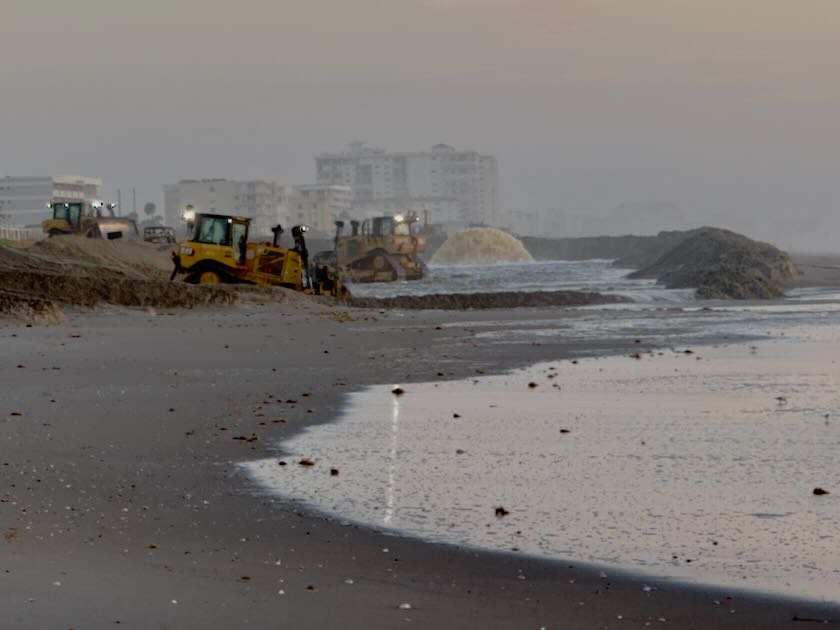Cape Canaveral, a prominent feature of Florida’s east coast, has played a significant role in safeguarding the region from hurricane attacks and facilitating rocket launches eastward. In the late 1940s, Port Canaveral was established to support the operations at Cape Canaveral Air Force Station. Today, it has transformed into one of the busiest cruise ship ports in the United States.


When the port was created (1951 to 1957), it altered the natural migration of sand from the southern part of the cape southward. Consequently, the beaches south of the port are not replenished to the same extent, resulting in a narrower beach. Moreover, severe storms exacerbate this issue.
To protect the property and provide a wide beach for tourists to frolic, the federal and state governments regularly bring in the Army Corps of Engineers (responsible for such work) to replenish the beach. This will be the third time they have done this since I moved back here in 2014. It was never done the first 20 years I lived here in the late 1950s to early 1970s.
The last time they did this, they removed sand from offshore. In my opinion, the result was disastrous. The beach has been severely damaged over the past five years. The drop-off is much steeper, resulting in an unnatural beach formation. Rip currents have been extremely dangerous in the past couple of years, and several people have tragically lost their lives after being caught in them.
The most recent result has restored what, in my recollection, was the norm during my childhood here. It’s too early to predict the success of the new replenishment, but the sand appears to be of much higher quality (less coarse).







The sand was dredged by a large dredge that pumped the slurry southward. Several booster stations ensured a steady flow rate. The specially modified bulldozers created a dam to corral the slurry, allowing the sand to settle out as the water drained through the open end. This was a significant improvement over the previous replentishment method, where the slurry was pumped onto the beach while the bulldozers repeatedly passed by the opening.






After they filled in the beach and moved south, you could get a good look at the large pipe emerging from the ocean. The final result looks great – I just hope it holds up better than the previous attempt. Overall, it’s better than the giant seawalls further south.


